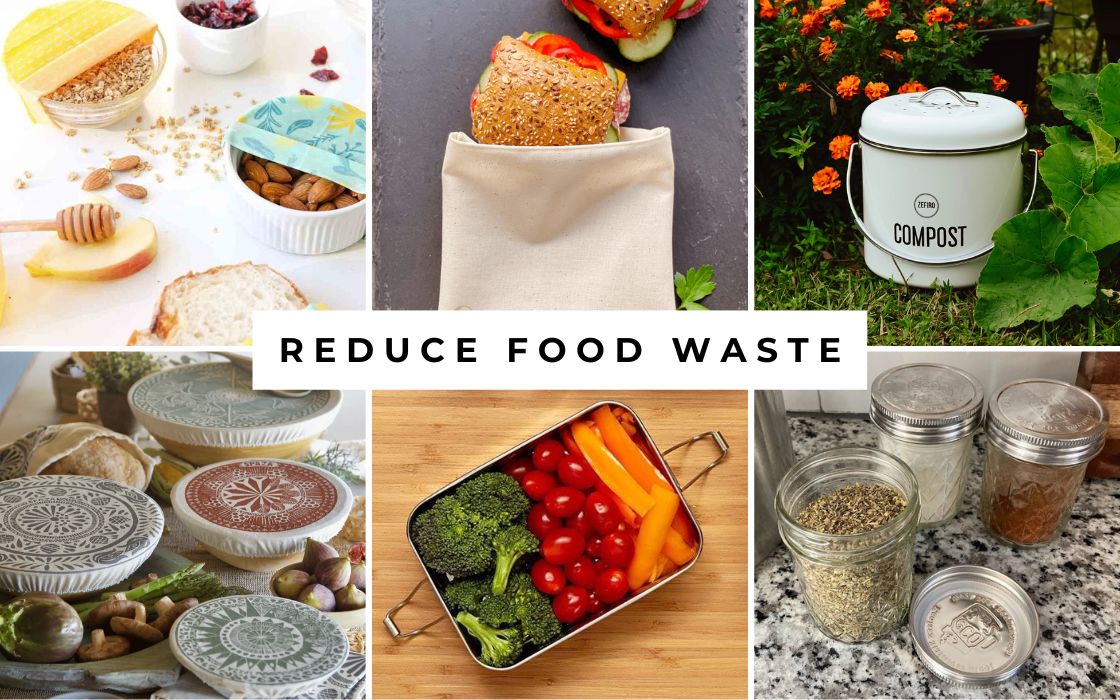FREE 🇺🇸 SHIPPING $60+ | FREE SAMPLES WITH EVERY ORDER
FREE 🇺🇸 SHIPPING $60+ | FREE SAMPLES WITH EVERY ORDER
Add description, images, menus and links to your mega menu
A column with no settings can be used as a spacer
Link to your collections, sales and even external links
Add up to five columns
Add description, images, menus and links to your mega menu
A column with no settings can be used as a spacer
Link to your collections, sales and even external links
Add up to five columns
Living Green: Food Waste
January 08, 2024

NEW YEAR, NEW HABITS
This January, we thought we'd take this opportunity to highlight some easy "eco" swaps you might want to consider, with the goal of living a bit more green this year. Each week, we'll focus on simple changes in a different area of our daily lives that can help us all reduce waste and move toward healthier living on a healthier planet.
Week 1: Reduce Food-Related Waste
Food waste is a significant issue worldwide. Around 1.3 billion tons of food are wasted every year. In the United States alone, about 30-40% of the food supply is wasted, leading to the emission of approximately 3.3 billion metric tons of carbon dioxide into the atmosphere. That's not to mention the ~11.2 million tons of regular trash that is generated by the food industry overall each year.
Keeping food scraps out of landfills is important because when food decomposes in a landfill, it produces methane, a potent greenhouse gas that contributes to climate change. Decomposing food scraps in landfills not only contribute to greenhouse gas emissions, but they also contaminate soil and water, leading to further environmental degradation and the depletion of natural resources. Composting food scraps instead can help reduce methane emissions and create nutrient-rich soil for agriculture.
Here are a few approaches we can take to reduce the amount of food-related waste we generate in our daily lives:
-
Try reusable containers, utensils, and straws
One easy swap is to bring reusable utensils, stainless steel drinking straws, coffee mugs, or other containers to restaurants and coffee shops. By doing so, we can avoid single-use plastic utensils and to-go containers. You can keep a set in your car or bag so you are always prepared.
-
Swap plastic wrap for reusable food wraps
Another simple change is to wrap leftovers without plastic. There are plenty of eco-friendly, plastic-free alternatives such as beeswax food wraps or silicone food storage bags that can be reused over and over again. Not only are you reducing waste, but you are also saving money in the long run. Plus, many are sustainably sourced or made from renewable resources, so it's win-win.
-
Pack your meals & snacks on the go
Consider taking lunches from home instead of buying pre-packaged meals. Not only is this more budget-friendly, but it also cuts down on the amount of waste generated from single-use packaging.
-
Keep food scraps out of the trash & compost them
Composting can take many different forms depending on your interest level and available resources. You do not have to be an expert on how to compost food scraps yourself, but the act of keeping your food scraps separate from your trash is an important one.
Here are some steps you could take, starting with the simplest:
Separate food waste from actual garbage.
Consider using a compost bin in your kitchen to collect food scraps throughout the day.
Process the scraps at home.
A few innovative companies have recently developed countertop composting machines that can process your food scraps overnight and turn them into soil you can use in your garden or in house plants. These are remarkable products if you are ready to jump in and have your own complete system right at home. What's Good has been selling Lomi — which we love, in fact Jennifer uses hers every day. However, we're on pause while we explore more affordable alternatives so that more of our customers can participate.
Collect your household food scraps for someone else to compost.
In some areas, you might be able to bring those scraps to a facility that will compost them for you. Some lucky towns provide food waste composting services as part of their waste management programs. If that’s not available where you live, you might be able to find a composting service that will pick up your bucket of scraps on a weekly basis for a fee.
Partner up!
If none of those are options for you and you still need to find a place for your household food waste, ask around to see if a composting neighbor or friend might be able and willing to accept your food scraps in the meantime. Sometimes it takes a village!
Learn how to compost at home.
If you have the interest and time to invest, you could embark on a journey to learn how to create and maintain your own ‘backyard’ composting system. There are several different approaches, depending on the tools you use and the space you might have. Read our composting tips blog or check out the book Home Composting Made Easy to get started.
Feeling overwhelmed? Please remember... nobody is perfect, and even doing one of these things at some point is a great step and a healthier choice for you and our planet.
Next week, we'll discuss ways to make your laundry routine plastic-free, chemical-free, and far more eco-friendly.
Thanks for reading!
(Have tips to share on reducing food waste? Share them in the comments, we'd love to hear!)
Happy New Year,
~The Team at What's Good
For All Shades of Green™
Leave a comment

Good News
If any email is worthy of your inbox, it's this. Our goal is 1–2x per month. You'll get helpful & inspiring eco info, plus subscriber-only discounts.
Welcome to What's Good
Here's your $10 coupon
COPY THIS CODE TO USE IN CHECKOUT
